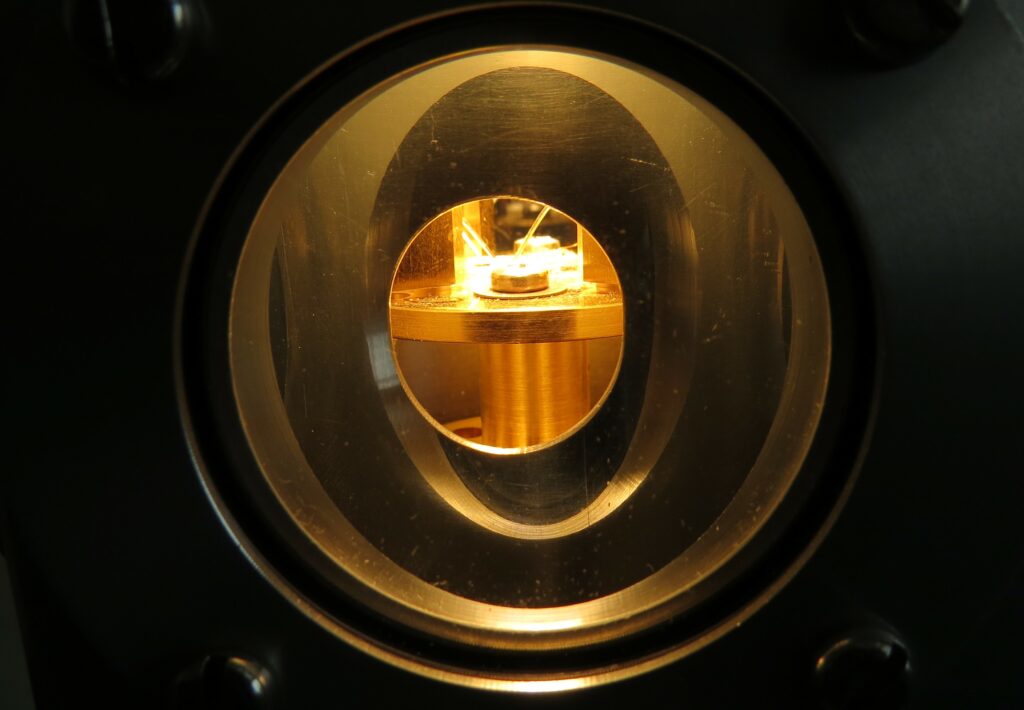Start - Organisation structure - Division of Solid State Physics
Division of Solid State Physics

Head
dr hab. Anna Starczewska, prof. PŚ.
e-mail: zfcs@polsl.pl
tel. +48 32 603 41 88
Description
The Department of Solid State Physics of the Institute of Physics at the Silesian University of Technology, located in Katowice, was established in its present form in 1990. First, the Department’s employees of the Department modernized and significantly expanded the teaching laboratories for students. Research laboratories were also created at the same time. Currently, the scientific activity of the Department of Solid State Physics focuses on the production of new materials, in particular from the elements belonging to the 15th, 16th, and 17th groups of the periodic table, the study of their optical, electrical, and magnetic properties, and the study of the impact of laser radiation on the properties of materials.
Scope of Research

Synthesis of Materials
Growing of single crystals by the crystallization method from the gas phase.
Preparation of nanomaterials by the sonochemical method, among others SbSI, BiI, Sb3I nanodots and nanowires, incl. SbSI, SbSeI, BiSI, BixSb1-xSI, SbS1-xSexI, SbS1-xOxI, SbSClxI1-x, BixSb1-xSeyS1-yClzI1-z
Functionalization of carbon nanotubes.
Manufacturing of photonic crystal structures in the form of opals and reverse opals.
Fabrication of polymer nanocomposites in the form of fibers and composites.
Welding nano-objects with microelectrodes.
Covering surfaces with conductive layers by vacuum spraying.

Microscopic Imaging
Optical microscopy.
Scanning electron microscopy.
Determination of chemical composition by EDS method.
Determination of the degree of surface roughness.

Examination of Optical Properties
Examination of the spectral characteristics of reflection coefficients and optical transmission (determination of, among others: energy gap and optical anisotropy of materials).
Transmission and diffusion reflection spectroscopy.
Photoreflection spectroscopy.
Determination of the temperature dependence of the optical parameters of semiconductors.

Study of Electrical and Magnetic Properties
Measurement of changes in physical properties of materials under the influence of controlled changes in external factors (atmosphere composition, lighting, temperature, pressure, and humidity) using direct and alternating current methods.
Measurement of electrical conductivity using the two- and four-contact method.
Impedance spectroscopy.
Investigation of spectral dependencies of photoconductivity characteristics.
Determination of the Seebeck coefficient of thin films and bulk materials.
Investigation of the Hall effect by the van der Pauw method.

The Influence of Laser Radiation on the Properties of Solids
Study of changes in the physicochemical and microstructural properties of the surfaces and the subsurface layer of the metal alloys (TiAl, TiAu, and AlSi) caused by the action of a concentrated laser beam.

Computer Modeling and Experimental Data Analysis
Modeling of physical phenomena using Mathematica, COMSOL Multiphysics™, ELMER, MPB (MIT Photonic Band), MEEP (MIT Electromagnetic Equation Propagation), SCIGRESS, and ABINIT packages.
Automation, acquisition, and analysis of experimental data in the LabVIEW environment.
Multimedia
Show allStaff members
- Adiunkt (Zakład Fizyki Ciała Stałego)
- Adiunkt (Zakład Fizyki Ciała Stałego)
- Profesor uczelni (Zakład Fizyki Ciała Stałego)
- Adiunkt (Zakład Fizyki Ciała Stałego)
- Profesor uczelni (Zakład Fizyki Ciała Stałego)
- Profesor uczelni (Zakład Fizyki Ciała Stałego)
- Profesor uczelni (Zakład Fizyki Ciała Stałego)
- Kierownik Zakładu (Zakład Fizyki Ciała Stałego)
- Adiunkt (Zakład Fizyki Ciała Stałego)
- Adiunkt (Zakład Fizyki Ciała Stałego)
- Adiunkt (Zakład Fizyki Ciała Stałego)









